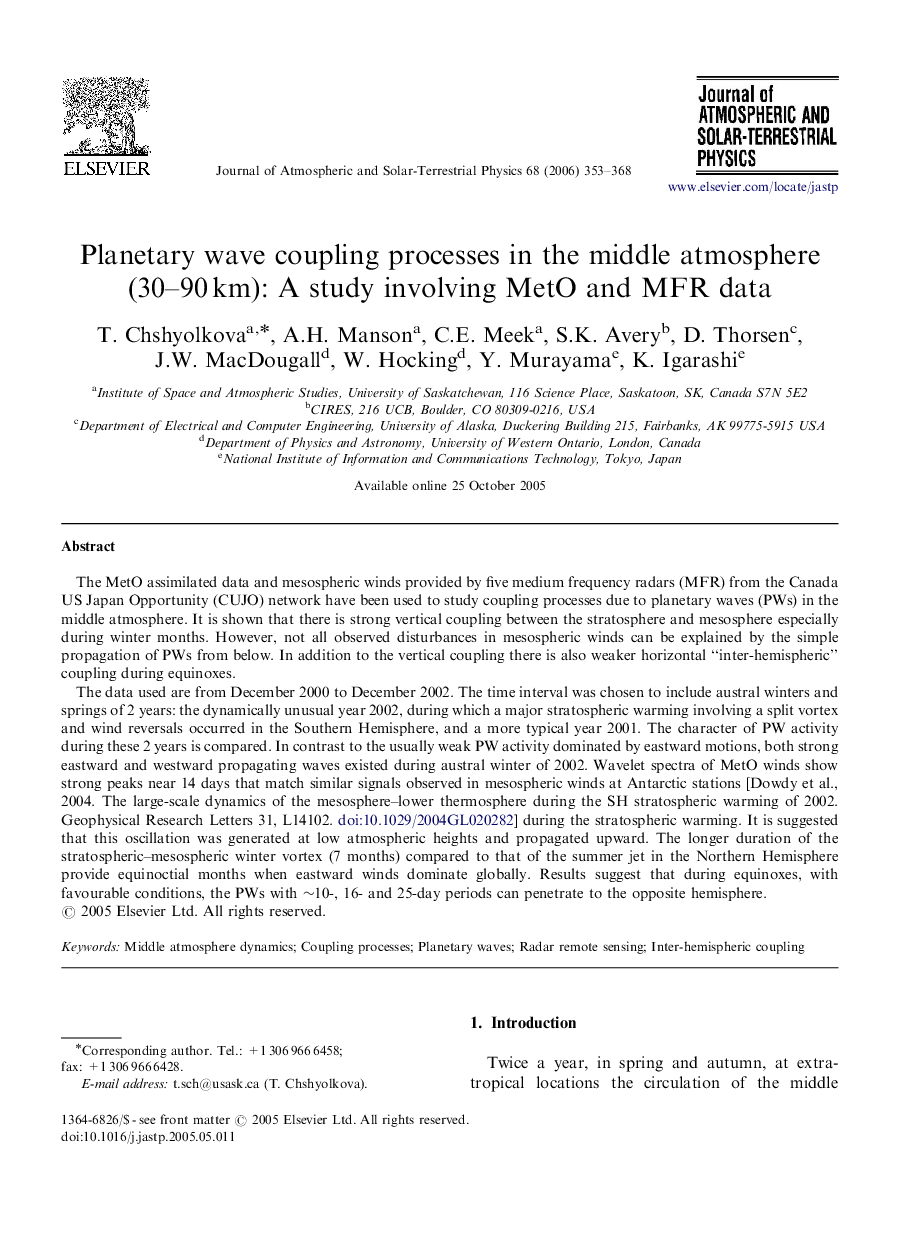| Article ID | Journal | Published Year | Pages | File Type |
|---|---|---|---|---|
| 1778474 | Journal of Atmospheric and Solar-Terrestrial Physics | 2006 | 16 Pages |
The MetO assimilated data and mesospheric winds provided by five medium frequency radars (MFR) from the Canada US Japan Opportunity (CUJO) network have been used to study coupling processes due to planetary waves (PWs) in the middle atmosphere. It is shown that there is strong vertical coupling between the stratosphere and mesosphere especially during winter months. However, not all observed disturbances in mesospheric winds can be explained by the simple propagation of PWs from below. In addition to the vertical coupling there is also weaker horizontal “inter-hemispheric” coupling during equinoxes.The data used are from December 2000 to December 2002. The time interval was chosen to include austral winters and springs of 2 years: the dynamically unusual year 2002, during which a major stratospheric warming involving a split vortex and wind reversals occurred in the Southern Hemisphere, and a more typical year 2001. The character of PW activity during these 2 years is compared. In contrast to the usually weak PW activity dominated by eastward motions, both strong eastward and westward propagating waves existed during austral winter of 2002. Wavelet spectra of MetO winds show strong peaks near 14 days that match similar signals observed in mesospheric winds at Antarctic stations [Dowdy et al., 2004. The large-scale dynamics of the mesosphere–lower thermosphere during the SH stratospheric warming of 2002. Geophysical Research Letters 31, L14102. doi:10.1029/2004GL020282] during the stratospheric warming. It is suggested that this oscillation was generated at low atmospheric heights and propagated upward. The longer duration of the stratospheric–mesospheric winter vortex (7 months) compared to that of the summer jet in the Northern Hemisphere provide equinoctial months when eastward winds dominate globally. Results suggest that during equinoxes, with favourable conditions, the PWs with ∼10-, 16- and 25-day periods can penetrate to the opposite hemisphere.
